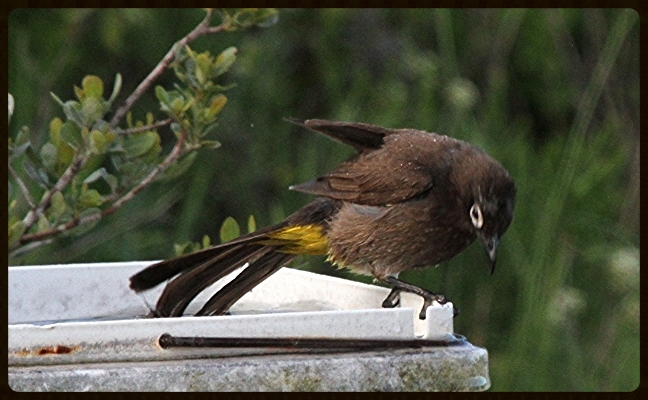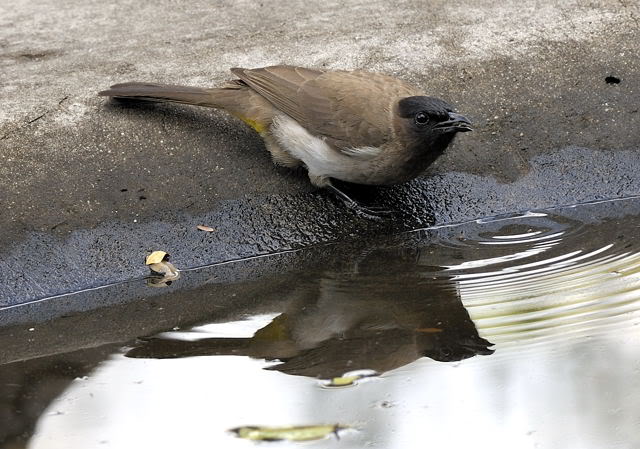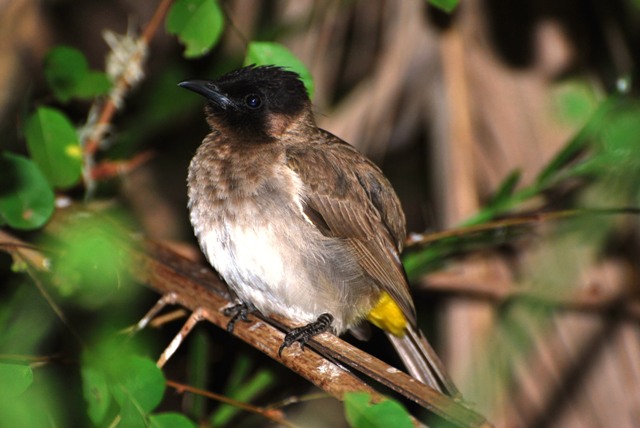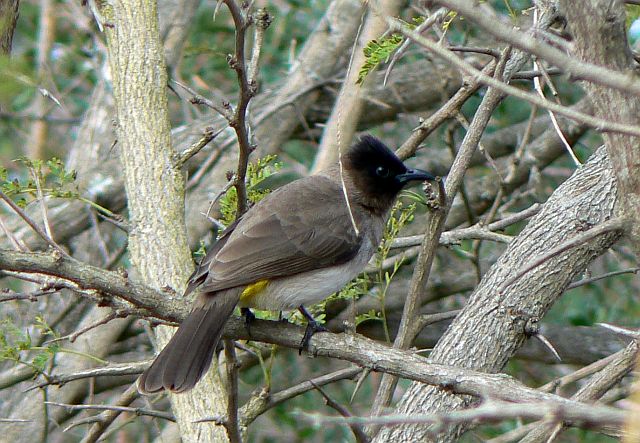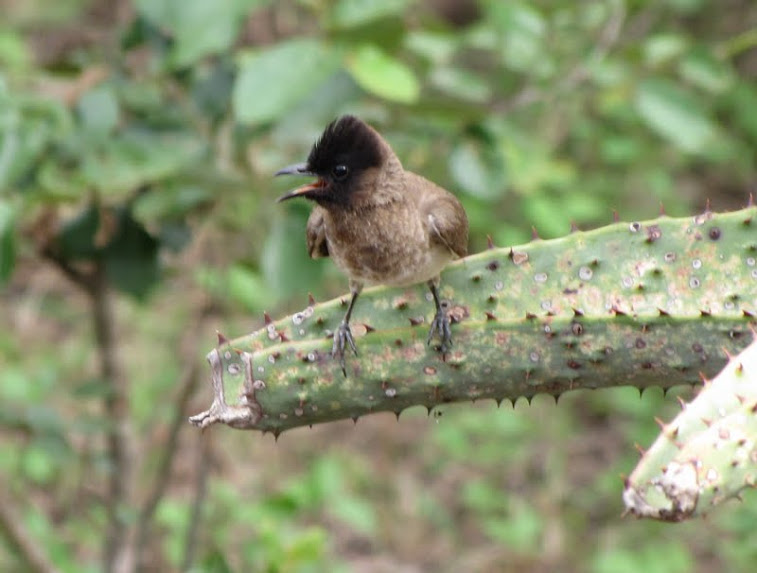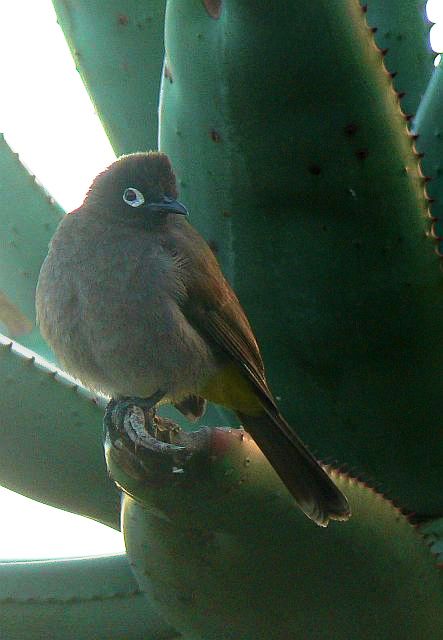 Bontebok National Park
Bontebok National ParkCape Bulbul Pycnonotus capensis
Description: The Cape Bulbul is 19-21 cm long, mainly dull, blackish brown with a white eye-ring, and yellow undertail coverts. The head has a small crest. The short, straight bill, legs and feet are black and the iris is dark brown. The sexes are similar in plumage.
This species cannot be confused with the other South African bulbuls
Distribution: It is endemic to southern South Africa
Habitat: The Cape Bulbul prefers moist habitats and is a resident breeder in coastal and riverine bush, open forest, fynbos, plantations and gardens and fynbos. It is particularly found of exotic wattle (Acacia cyclops).This bird is usually found within 100km of the coast and below 500m.
Feeding: This species eats mostly fruits but it will also take seeds; nectar and even insects, which are either hawked on the wing or taken from flowers.
Breeding: The Cape Bulbul is a monogamous bird which, usually, pairs for life. It is territorial during the breeding season, though its territory is neither strongly advertised nor defended. The male has been observed giving courtship displays. This species can nests any time between August and March, but breeding peaks during the southern spring, from September to November. Besides, it is not uncommon for a couple to have two broods a year.
Nest: The nest site is chosen by the female, which also builds the nest, using twigs, grass stems and rootlets laid on a foundation of coarse twigs. The result is a thick walled cup structure placed in a small tree or shrub, concealed by the foliage. The nest can be lined with a variety of materials, from animal wool, cobwebs, string, cotton, paper to vegetable fibers.
Eggs: The Cape Bulbul lays between 2 to 5 pink eggs (usually 2-3) which are incubated solely by the female for some 11to 14 days.
Young: Both parents feed the nestlings. For the first 6 or 7 days, they receive mostly insects, then the chicks diet consist mainly on fruits. The nestling fledge in 12 to 14 days. Juveniles don't have the distinctive white eye ring of the adults.
Call: The most typical call of this species is a liquid whistle of two or more varied notes "pit-peet-pitmajol, piet-piet-patata". Its contact calls sound like “chirrup” or “key-link”. The alarm call is a low pitched “churr”.



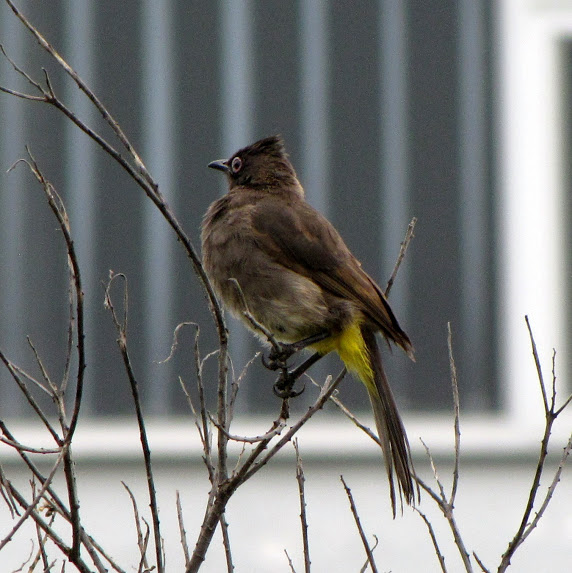



 2.10.2009 Boulder
2.10.2009 Boulder 6.3.2011 West Coast
6.3.2011 West Coast 13.10.2012 Kirstenbosch
13.10.2012 Kirstenbosch